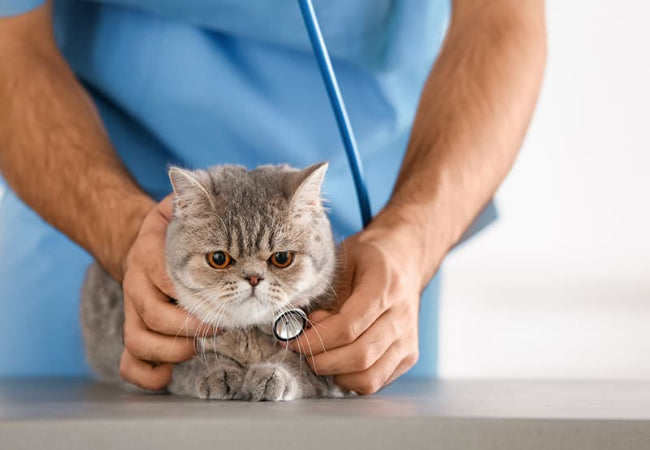Urinary Tract Infections in Cats 2025: Symptoms, Treatment & Prevention 🐱✨

In this article
Urinary Tract Infections in Cats 2025: Symptoms, Treatment & Prevention 🐱✨
By Dr. Duncan Houston BVSc
Is your cat peeing outside the litter box, straining, or suddenly vocalizing when they urinate? It could be a urinary tract infection—or something even more serious.
I’m Dr. Duncan Houston, veterinarian and founder of Ask A Vet. UTIs are less common in cats than dogs, but when they happen, they need prompt treatment—especially in male cats. Here’s what to know.
🔍 UTI vs FLUTD – What’s the Difference?
- UTI (Urinary Tract Infection): Caused by bacteria in the bladder or urethra
- FLUTD (Feline Lower Urinary Tract Disease): A group of urinary issues, including UTI, crystals, inflammation, and blockages
🚩 Common Signs of a UTI in Cats
- Straining to urinate
- Frequent small urinations
- Blood in urine
- Peeing outside the litter box
- Vocalizing or hiding more than usual
⚠️ Emergency Signs – Act Fast
- Male cat who can’t urinate at all (true emergency)
- Crying in the litter box with no pee produced
- Vomiting, collapse, or hard, painful abdomen
🧪 Diagnosing a Cat UTI
- Urinalysis to check pH, blood, crystals, and bacteria
- Urine culture to confirm infection
- Bloodwork and X-rays if crystals, stones, or other disease is suspected
💊 How Vets Treat UTIs in Cats
- Antibiotics (based on culture results when possible)
- Pain relief medications (like buprenorphine or NSAIDs)
- Increased water intake (wet food, fountains, broths)
- Prescription urinary diets (like Royal Canin Urinary SO or Hill’s c/d)
🏠 At-Home Support Tips
- Switch to wet food or add extra water to meals
- Offer clean, multiple litter boxes in quiet areas
- Reduce stress with routine, pheromone diffusers, and vertical space
🧼 Preventing Future UTIs or FLUTD
- Feed high-moisture diets
- Keep litter boxes clean and easily accessible
- Minimize stress (cats are sensitive!)
- Encourage daily play and hydration
🔗 Tools from Ask A Vet
- Felt Cat Caves – Reduce stress with safe, quiet hideaways
- Water fountains – Encourage hydration to support urinary health
- Ask A Vet – Log symptoms, upload videos, and speak to a vet if your cat is straining or peeing inappropriately
📋 Summary Excerpt
UTIs in cats can be subtle—or a sign of something more serious. A vet explains the symptoms, treatments, and ways to prevent urinary issues in both male and female cats.
❓ FAQs
-
Q: Are UTIs common in cats?
A: Less common than in dogs. Most urinary issues in cats are due to inflammation, crystals, or stress—not true infection. -
Q: How do I know if my cat’s UTI is an emergency?
A: If your cat can’t urinate, it’s a life-threatening emergency. Get to a vet immediately—especially for male cats. -
Q: Can I treat a cat UTI at home?
A: No. Antibiotics and pain meds are needed. Home remedies delay care and increase suffering or complications.






